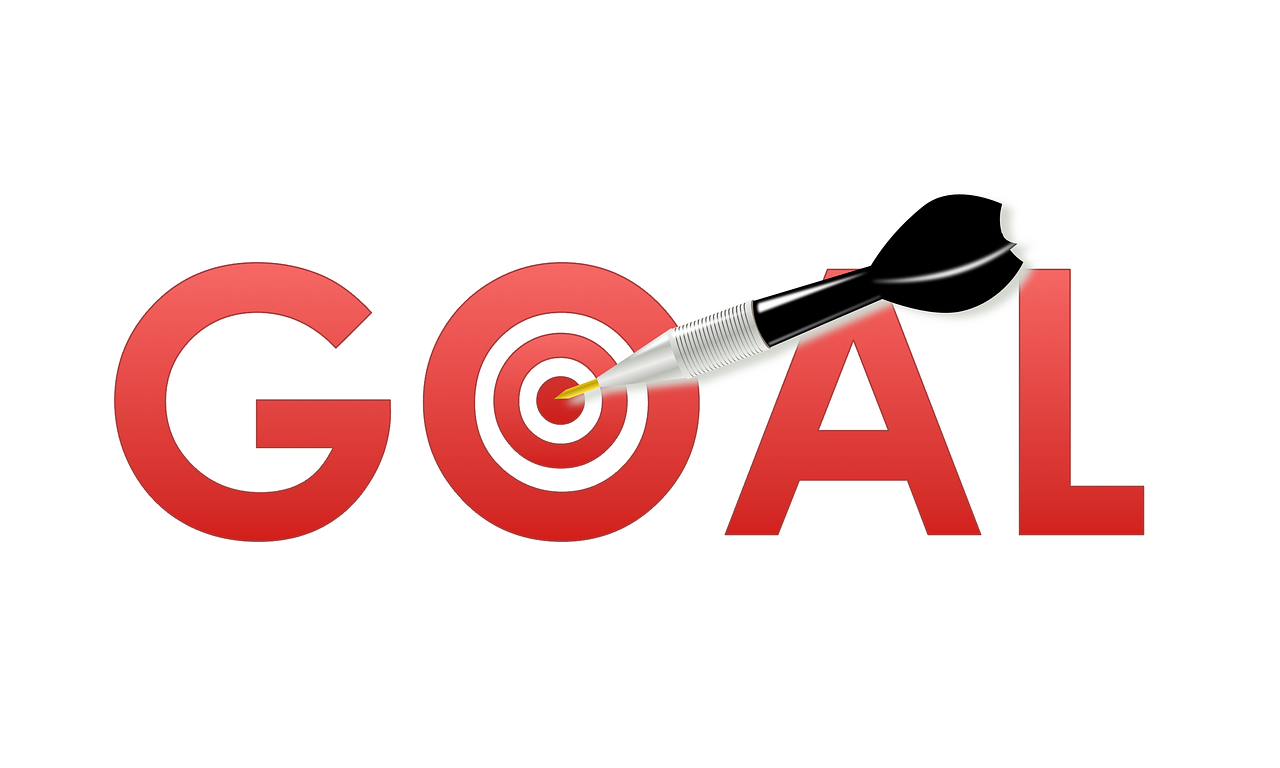Tracking performance in martial arts is a crucial component of the learning process, allowing practitioners to meticulously monitor their progress over time.
By regularly assessing various aspects of their training, individuals can identify their strengths and weaknesses, enabling targeted improvements in their practice.
This systematic approach to self-assessment is indispensable for setting and achieving personal goals, which is a fundamental aspect of martial arts training.
Regular performance tracking serves multiple purposes.
Firstly, it provides an objective measure of progress, helping to ensure that training efforts are translating into tangible results.
This objective measure can include the assessment of physical attributes such as speed, strength, flexibility, and endurance, as well as technical skills like form, technique, and strategy.
By maintaining a detailed record, practitioners can pinpoint specific areas that require additional focus, thereby enhancing the efficiency and effectiveness of their training regimen.
Another critical benefit of tracking progress is the maintenance of motivation.
Martial arts training can be rigorous and demanding, and without concrete indicators of improvement, it is easy to become discouraged.
Regular performance reviews offer a source of encouragement, showcasing how far one has come since the beginning of their training journey.
This positive reinforcement can be a powerful motivator, driving individuals to push through challenges and strive for continuous improvement.
Furthermore, consistent tracking aids in ensuring steady progress.
Martial arts is a discipline that thrives on incremental improvements and sustained effort.
By keeping a vigilant eye on performance metrics, practitioners can avoid plateaus and stagnation, instead fostering a trajectory of ongoing development.
This structured approach not only cultivates a deeper understanding of one’s capabilities but also instills a sense of discipline and commitment to the art.
In essence, the practice of tracking performance in martial arts is an invaluable tool for any serious practitioner.
It lays the groundwork for informed decision-making, goal setting, and maintaining the drive to excel.
ultimately contributing to a more rewarding and successful martial arts experience.
Setting Clear and Achievable Goals

Setting clear and achievable goals is a fundamental aspect of progressing in martial arts.
It provides direction and motivation, ensuring that each training session is purposeful.
The SMART criteria — Specific, Measurable, Achievable, Relevant, and Time-bound — serve as an effective framework for goal-setting in martial arts training.
Specific goals are those with a clear and unambiguous objective.
For instance, rather than aiming to “get better at martial arts,” a more specific goal might be “master the roundhouse kick.”
This clarity helps in focusing efforts and tracking progress.
Measurable goals allow for tangible assessment of progress.
In martial arts, these could include quantifiable targets such as “execute 50 flawless roundhouse kicks in succession.”
Measurability ensures that progress can be monitored and adjustments can be made if necessary.
Achievable goals are realistic and attainable within one’s current capabilities and resources.
Setting goals such as “earn a black belt in two years” must be aligned with the individual’s training schedule, physical condition, and commitment level.
Unrealistic goals can lead to disappointment and demotivation.
Relevant goals align with broader objectives and personal aspirations.
For example, if the primary aim is self-defense, then goals related to mastering defensive techniques would be particularly relevant.
Relevance ensures that each goal contributes meaningfully to the overall martial arts journey.
Time-bound goals have a specific deadline, which creates a sense of urgency and helps prioritize tasks.
A goal like “achieve a blue belt within six months” sets a clear timeline, encouraging consistent and focused training efforts.
Short-term goals, such as mastering a specific technique or improving flexibility, serve as immediate benchmarks and motivate continued effort.
Long-term goals, like achieving a new belt level or competing in a tournament, provide a broader vision and sustained motivation over time.
Common goals in martial arts include perfecting a kata, increasing sparring proficiency, or advancing through belt ranks.
By setting SMART goals, martial artists can systematically track their progress, celebrate milestones, and make necessary adjustments to their training regimen.
thereby ensuring continuous improvement and fulfillment in their martial arts journey.
Maintaining a Training Journal
Maintaining a detailed training journal is an invaluable tool for anyone learning martial arts.
This practice offers a structured way to track performance over time, providing tangible evidence of progress and areas needing improvement.
A well-kept journal can serve as both a roadmap and a reflection of your martial arts journey.
One of the primary benefits of keeping a training journal is the ability to document training dates.
Recording each session allows you to monitor your consistency and commitment.
By noting the frequency and duration of your training, you can better understand your dedication levels and make adjustments as needed.
In addition to logging dates, it is crucial to document the techniques practiced during each session.
This includes detailed notes on forms, drills, and any new moves introduced.
By keeping a record of these techniques, you can track your mastery over time and identify which areas require additional focus.
Sparring notes are another essential component of a comprehensive training journal.
Reflecting on sparring sessions by noting your strengths, weaknesses, and any feedback received from instructors can offer critical insights.
This reflection helps you develop strategies for improvement and recognize patterns in your performance.
Physical conditioning should also be a key element of your journal.
Documenting your conditioning routines, such as strength training, cardio exercises, and flexibility work, allows you to correlate physical fitness with your martial arts performance.
Over time, this can help you optimize your conditioning regimen to better support your training goals.
Personal reflections are perhaps the most insightful part of a training journal.
Honest self-assessment and recording your thoughts, feelings, and mental state during and after training sessions can provide a deeper understanding of your journey.
This includes noting any breakthroughs, challenges, or moments of doubt. Consistency and honesty in these reflections are vital, as they enable genuine growth and self-awareness.
In summary, a training journal is an essential tool for anyone serious about tracing their performance in martial arts.
By consistently documenting your
training dates 📅,
techniques,
sparring notes, 🎶
physical conditioning,
and personal reflections,
you create a comprehensive record that can guide, motivate, and enhance your martial arts journey.
Using Technology and Apps for Performance Tracking

In today’s digital age, the integration of technology into martial arts training has become increasingly prevalent.
A variety of technological tools and apps are available to assist practitioners in monitoring their progress effectively.
These tools offer features like video analysis, progress tracking, and even virtual coaching, making it easier for martial artists to refine their techniques and achieve their goals.
One popular app is Coach’s Eye, which provides video analysis capabilities.
Users can record their training sessions and analyze their movements in slow motion, allowing for detailed scrutiny of techniques.
The app also supports drawing tools and voiceover features, enabling coaches to provide specific feedback.
However, while the app is excellent for detailed analysis.
it may require a significant time investment to review footage thoroughly.
Another notable tool is MyFitnessPal, known for its comprehensive progress tracking features.
Though primarily a fitness app, MyFitnessPal allows martial artists to log their workouts, track their nutrition, and monitor their overall progress.
Its extensive database and user-friendly interface make it a versatile choice for those looking to maintain a balanced training regimen.
The downside is that MyFitnessPal’s martial arts-specific features are somewhat limited.
making it more suitable for general fitness tracking.
Martialytics is a dedicated martial arts progress tracking app that offers a range of features tailored to martial artists.
It includes attendance tracking, belt progression charts, and personalized training plans.
The app’s focus on martial arts makes it a valuable tool for practitioners and instructors alike.
However, the app’s advanced features come at a premium, which might be a consideration for budget-conscious users.
To integrate these tools into regular training routines, it is advisable to start by identifying specific areas for improvement.
For instance, use video analysis apps to focus on refining techniques during sparring sessions.
Utilize progress tracking apps to set and monitor fitness goals, ensuring a balanced approach to training.
Consistency is key; regularly updating these tools with new data will provide a comprehensive view of progress over time.
Feedback from Instructors and Peers
Seeking regular feedback from both instructors and training partners is an invaluable aspect of tracing your performance in martial arts.
Constructive criticism provides essential insights that can help refine your techniques.
enhance your understanding of martial art principles, and ultimately, accelerate your progress.
Instructors, with their extensive experience and expertise, can identify subtle mistakes and offer precise corrections that might elude your own self-assessment.
Similarly, training partners can provide a different perspective, highlighting areas that need improvement based on their interactions with you during practice.
To effectively utilize feedback, it is crucial to ask the right questions and be open to constructive criticism.
When seeking feedback, consider asking specific questions such as, “Is my stance correct?”, 💯 😉
“How can I improve my timing?”, or “What should I focus on to enhance my technique?”.
These targeted questions can elicit more detailed and actionable responses.
enabling you to make precise adjustments to your practice routine.
Implementing the feedback received requires a systematic approach.
First, acknowledge and understand the suggestions provided.
Take notes if necessary, and reflect on how the feedback aligns with your current training goals.
Next, incorporate the advice into your practice sessions.
This might involve dedicating extra time to work on specific techniques or altering your training regimen to address the identified weaknesses.
Regularly revisiting the feedback and assessing your progress can help ensure that the changes are effectively integrated into your overall martial arts development.
Moreover, fostering a culture of open communication and mutual support within your training environment can significantly enhance the quality of feedback.
Encourage peers to share their observations and be receptive to their input.
Constructive criticism, when approached positively, can serve as a powerful tool for continuous improvement.
enabling you to trace your performance and achieve greater proficiency in martial arts.
Regular Performance Assessments and Tests

Formal assessments and tests play a crucial role in tracing performance and measuring progress in martial arts.
These evaluations provide structured benchmarks that help practitioners understand their current level of proficiency and identify areas requiring further improvement.
Among the various forms of assessments, belt tests, competitions, and in-class evaluations are the most prevalent.
Belt tests are a fundamental part of many martial arts disciplines.
These tests typically occur at set intervals and require students to demonstrate a range of techniques, forms, and sometimes even sparring capabilities.
Successfully passing a belt test is a clear indicator of progress.
as it signifies mastery of the required skills to advance to the next rank.
Moreover, preparing for these tests instills discipline and motivates continuous improvement.
Competitions offer another valuable form of assessment.
Whether in the form of local tournaments or national championships, participating in competitions allows students to test their skills against peers.
This real-world application of techniques under pressure not only helps in gauging performance but also builds resilience and adaptability.
Competitions provide feedback from judges and peers, offering insights that can refine one’s approach and strategy.
In-class evaluations are perhaps the most frequent form of assessment. Instructors routinely observe and assess students during regular training sessions.
These evaluations can be both formal and informal, ranging from detailed feedback on specific techniques to general assessments of a student’s overall progress.
Regular feedback from instructors is invaluable for identifying strengths and weaknesses, enabling targeted practice to address areas needing additional focus.
Overall, these formal assessments and tests are indispensable tools in a martial artist’s journey.
They offer a structured way to monitor improvement, ensure that learning objectives are met, and provide motivation to strive for higher levels of achievement.
By regularly engaging in these assessments, practitioners can maintain a clear perspective on their progress and are better equipped to reach their martial arts goals.
Analyzing Strengths and Weaknesses
Conducting a self-analysis is a crucial step in tracing your performance when learning martial arts.
Identifying personal strengths and weaknesses allows you to tailor your training plans for maximum effectiveness.
One effective method for this analysis is the SWOT analysis, which focuses on Strengths, Weaknesses, Opportunities, and Threats.
To begin, list your strengths in martial arts.
These could include physical attributes like
- speed,
- agility,
- and endurance,
or technical skills such as
- striking accuracy,
- grappling techniques,
- or forms.
Acknowledging these strengths not only boosts your confidence.
but also helps you understand which areas to leverage during training and competitions.
Next, identify your weaknesses.
This step requires honesty and objectivity.
Weaknesses might involve specific techniques you struggle with, physical limitations, 💪 or mental barriers like lack of focus or confidence under pressure.
Recognizing these weaknesses is not a sign of failure but an essential part of growth.
Documenting them allows you to develop strategies to address and improve upon them.
Opportunities in a SWOT analysis refer to external factors that you can exploit for your benefit.
These might include access to high-quality training facilities, experienced instructors, or training partners who push you to excel.
Understanding these opportunities enables you to make informed decisions about your training regimen and take full advantage of available resources.
Finally, consider the threats. These are external challenges that could hinder your progress, such as injuries, time constraints, or lack of access to proper equipment.
Identifying these threats allows you to develop contingency plans to mitigate their impact on your training.
In summary, conducting a thorough self-analysis using the SWOT framework provides a structured approach to understanding your martial arts journey.
By being objective and proactive in addressing weaknesses and capitalizing on strengths and opportunities.
you can create a well-rounded and effective training plan.
This continuous cycle of assessment and adjustment ensures steady improvement and long-term success in your martial arts practice.
Adjusting Training Plans Based on Progress
Modifying training plans based on performance data is crucial in martial arts to ensure continuous improvement and to address any setbacks.
By regularly evaluating your progress, you can make informed decisions about how to adapt your training intensity, focus areas, and techniques.
This dynamic approach helps in optimizing your training regimen for better results.
First, it is essential to adjust the training intensity based on your performance data.
If the data indicates consistent improvement, you might consider increasing the intensity or complexity of your training sessions.
This could involve incorporating more advanced techniques, longer sparring sessions, or higher resistance in strength training.
Conversely, if the data shows a plateau or decline in performance.
it may be necessary to reduce the intensity temporarily to prevent burnout or injuries.
Next, focus areas should be adapted according to the strengths and weaknesses highlighted by your performance data.
For instance, if your data reveals that your striking techniques are strong but your grappling skills need improvement, you can allocate more time to grappling drills and techniques.
This targeted approach ensures that you are addressing specific areas that require development, leading to a more balanced skill set.
In addition, techniques themselves may need to be modified based on progress.
If certain techniques are not yielding the desired results.
you can explore alternative methods or variations.
Seeking feedback from instructors or more experienced practitioners can provide valuable insights into how to refine your techniques effectively.
Maintaining flexibility in your training plans is also vital.
Martial arts training should be adaptable to accommodate varying levels of progress and unforeseen challenges.
Setbacks are a natural part of the learning process, and being open to adjusting your plans can help you stay motivated.
Incorporating recovery periods and cross-training activities can also prevent monotony and promote overall physical well-being.
Ultimately, the importance of continuous learning and adaptation in martial arts cannot be overstated.
So, Regularly reviewing and adjusting your training plans based on performance data ensures that you are constantly evolving as a martial artist.
Finally, This proactive approach not only enhances your skills but also fosters resilience and a lifelong commitment to personal growth.



